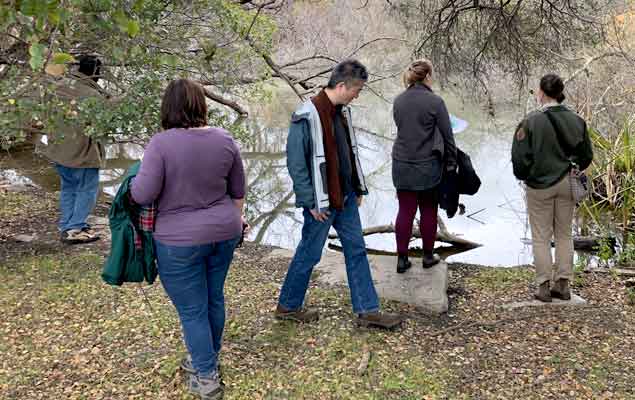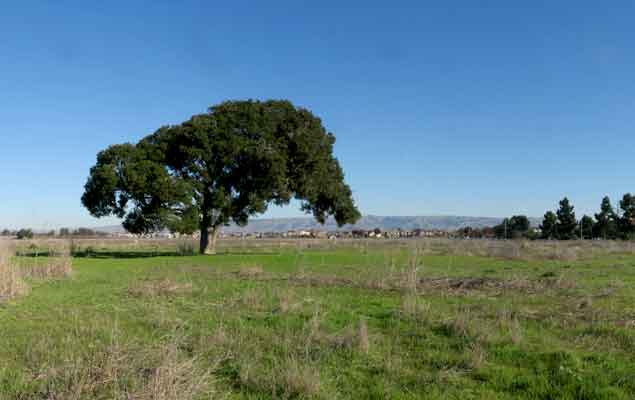
East Bay Park expands public access and urban agriculture
A huge project in progress by the East Bay Regional Park District (EBRPD) will greatly expand the size, public facilities and environmental role of one of the most popular public parks in the East Bay. The Coyote Hills Restoration and Public Access Project will add more than 300 acres of public parkland to Coyote Hills Park, with a goal of balancing habitat restoration, public access, and urban agriculture along with the site’s historic land use and rich cultural significance.
Comprised of 1,266 acres of marshland and rolling grassland covered hills, Coyote Hills Regional Park is a very popular destination, which is located along the eastern shore of San Francisco Bay, northwest of the cities of Fremont and Newark. The most popular visitor activities are bicycling, walking, bird watching, jogging, nature exploration, and picnicking.
“The park district received a generous donation of land from the Patterson family that’s expanded Coyote Park by about one third,” said Environmental Programs Manager Chris Barton who is overseeing the Coyote Hills Restoration and Public Access Project.
“This donation made it possible that houses would not be built right against the park, or other development, including a proposed golf course.”
EBRPD conducted a two-year study regarding public access and habitat restoration, as well as planting trees, expanding wetlands, and expanding vegetation along historic creeks. The district also expanded or began organic farming, composting and the use of grazing animals in the park.
“We are trying to strike a balance between public access and habitat preservation, and also the agricultural heritage of the area,” says Barton.
New trails, picnic areas, parking, and restrooms are part of the plan, which will also expand the programs to educate people about wildlife in the area. A parks board meeting planned for September 3rd will consider approving the plan and take comments from the public on environmental and other aspects of the project.
EBRPD has a grant program to leverage the tax dollars it receives for such projects.
“Voters approved measure WW for park development and we will try to match the funding with state and federal grants,” says Barton. Our goal is to match every tax dollar with two dollars of grant money.”
With at least one year for permits, engineering, design, and clearing the land of weeds, construction on new facilities won’t begin until 2021. Barton adds that the newly expanded park will help meet the growing demand for recreation areas. The demand is increasing with technology companies and new housing in the Fremont area. Barton also mentions that the City of Fremont conducted a survey recently that showed that 56 percent of Fremont residents have visited Coyote Park, which is a very popular place that attracts visitors from throughout the Bay Area.
Barton encourages people to send a letter to parks board member Ayn Wieskamp to express their interest and excitement for the project. In addition to the recreational and environmental benefits, the large project will create many jobs in construction, land clearing and other work.
EBRPD refers to Coyote Hills as a Climate Smart Park, which includes adaptive design and educational elements that demonstrate how a park can be managed to be resilient and adapt to the effects of climate change while tapping into nature-based solutions that contribute to the quality of life in the region.
“We are planning it in a very conscious way to reduce greenhouse gases,” says Barton.

Such a big project is fitting this year as the East Bay Regional Park District celebrates a big anniversary. Created in 1934, the largest local park agency in the nation is marking 85 years of connecting parks with people.
Goals and actions of the Coyote Hills project include:
• Restore willow marsh, oak savanna, seasonal wetlands and agricultural habitat
• Plant native trees, shrubs and grasses to restore the site’s historic ecology.
• Manage grasslands to reduce fire fuels and improve wildlife habitat.
• Increase habitat diversity through native species planting.
• Improve wildlife foraging habitat.
• Farm using Climate Smart practices.
• Provide public access and visitor-serving facilities
• Construct new and improved accessible trails network.
• Provide picnic facilities, restroom and drinking water.
• Upgrade park entry, circulation, parking and utilities.
• Create opportunities for wildlife viewing.
• Provide educational displays and interpretive programs including nature, cultural and historic heritage.
Green Infrastructure
Visitors will be able to view, explore and learn about ecology, historic agricultural use and cultural significance. Trailside wildlife viewing, educational displays, and naturalist programs may include environmental education, climate science, adaptation, sustainable agriculture and the Park’s rich cultural heritage.
Low Impact Development
Visitor facilities will be designed, located, and built to minimize impacts to sensitive wildlife habitat. Storm water will be captured to filter runoff before it is dispersed into adjacent natural areas and SF Bay.
Active Transportation and Transit
Trails will link to the regional trails network and help implement Fremont’s active transportation facilities. The District will work with AC Transit to improve transit options.

